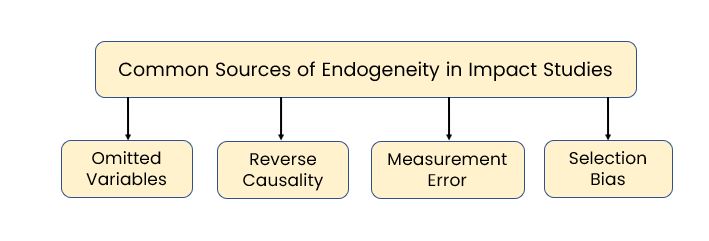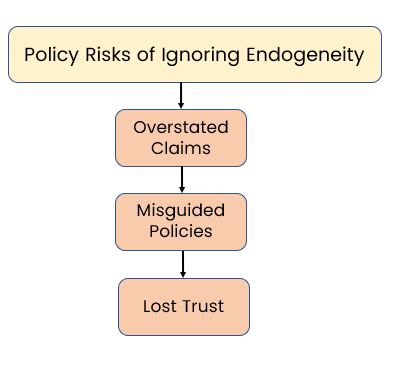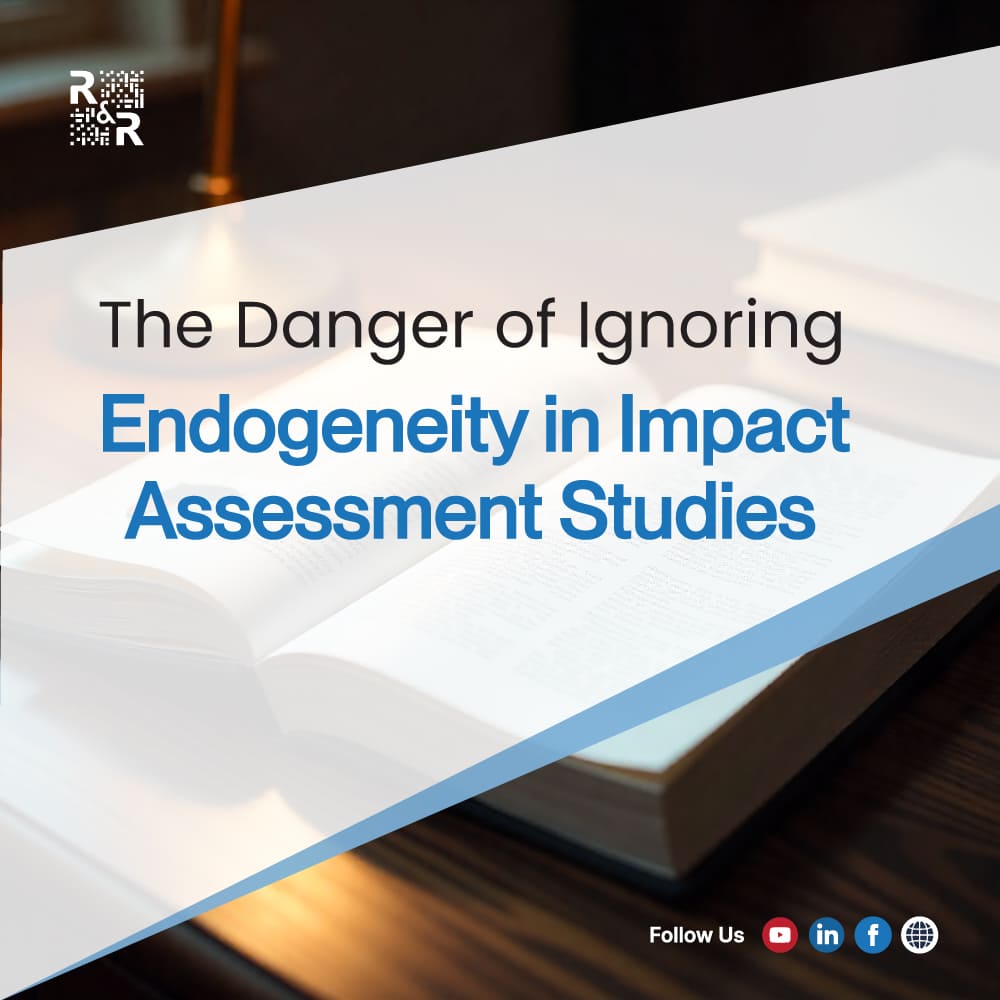Impact assessments are widely regarded as the gold standard for evidence-based policymaking. Yet, behind many “causal” claims lies a silent but serious flaw: endogeneity.
Most researchers focus on sample size, statistical fit, or significance levels. However, ignoring endogeneity can transform expensive evaluations into misleading exercises. Instead of guiding progress, such studies risk misallocating resources and damaging trust.
Understanding Endogeneity in Impact Studies
Endogeneity occurs when explanatory variables correlate with the error term, leading to biased and inconsistent estimates. This undermines causal interpretation. According to Wooldridge (2016), addressing endogeneity is essential for valid econometric inference.
Common Endogeneity Traps
1.Omitted Variable Bias
When key drivers like education, infrastructure, or institutional quality are excluded, coefficients reflect spurious correlations rather than true impacts.
2. Simultaneity (Reverse Causality)
Programs and outcomes often influence each other. For example, higher incomes may drive program participation while programs simultaneously raise income.
3. Measurement Error
Relying on noisy proxies such as self-reported income leads to systematic bias (Bound et al., 2001).
4. Selection Bias
Program participants often differ systematically from non-participants. Without correcting for this, measured impacts reflect pre-existing differences.
Why Ignoring Endogeneity is Dangerous
- Overstated Claims: Policymakers may wrongly assume programs are more effective than reality.
- Misguided Decisions: Funds and efforts may flow to interventions that do not deliver.
- Eroded Trust: Donors, governments, and communities lose confidence when results collapse under scrutiny.
Endogeneity is not just a statistical issue—it’s a credibility crisis.
Solutions for Tackling Endogeneity
At Research & Report Consulting, we advocate building safeguards against endogeneity into study design from the start.
- Rigorous Diagnostics: Employ tests like Hausman test to detect endogeneity.
- Robust Methods: Use Instrumental Variables (IV), Two-Stage Least Squares (2SLS), Difference-in-Differences (DID), and Randomized Controlled Trials (RCTs).
- Contextual Solutions: Adapt methods to real-world data availability and constraints.
- Transparency: Acknowledge methodological trade-offs and limitations.

Figure 1: Common Sources of Endogeneity in Impact Studies, Source: Wooldridge (2016)

Figure 2: Policy risks of ignoring endogeneity, Source: Bound et al. (2001); Angrist & Pischke (2009)
Final Thought
Endogeneity is the silent threat that turns impact into illusion. A regression table with significant stars may look convincing, but without addressing hidden biases, results are fragile and misleading.
At Research & Report Consulting, we help NGOs, researchers, and institutions strengthen causal claims with methodological rigor. Real impact comes from confronting complexity—not ignoring it.
What strategies have you used to deal with endogeneity in your research? Share your thoughts below!

